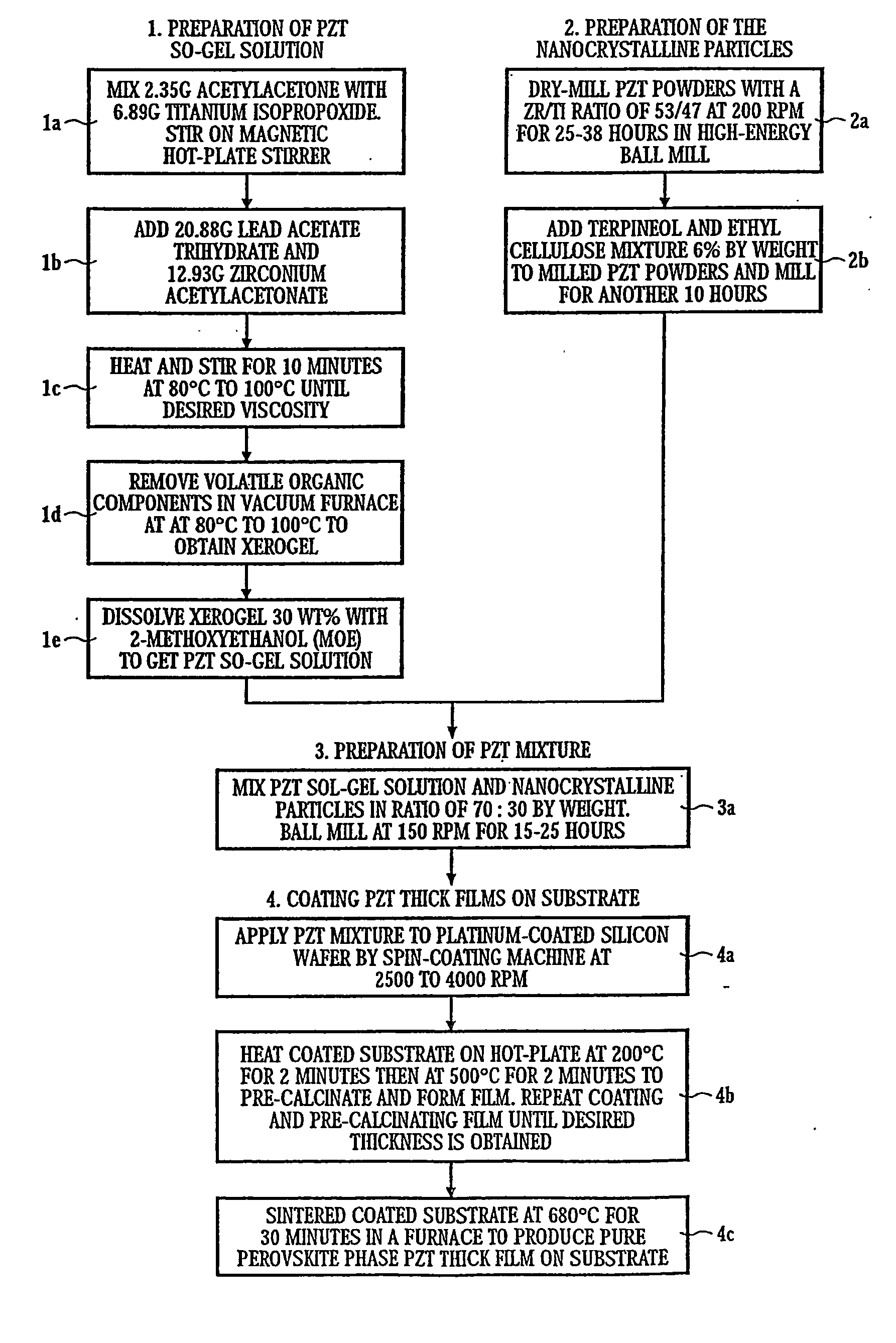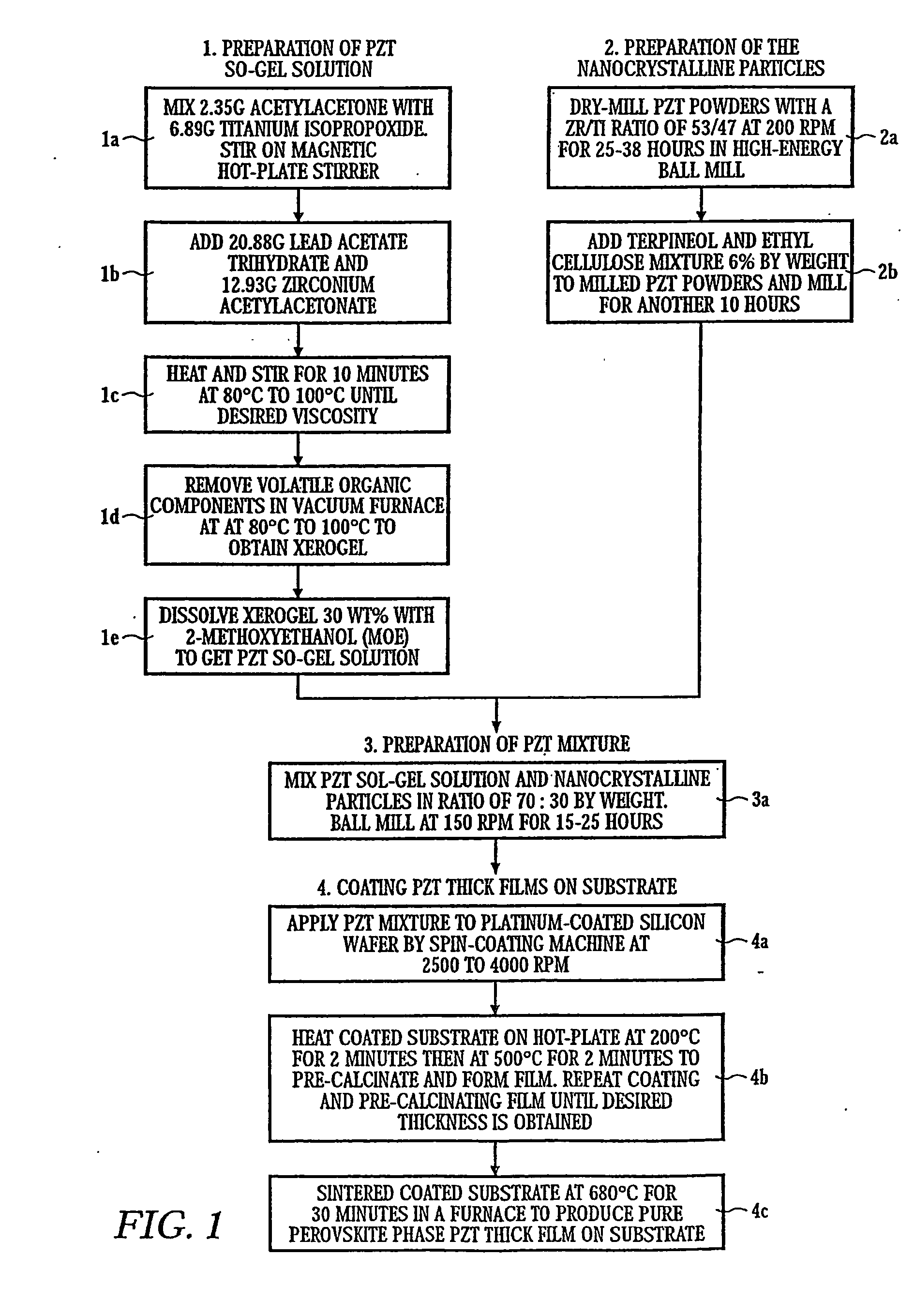Process for producing nanorcrystalline composites
a nanocrystalline composite and composite technology, applied in the direction of inorganic chemistry, material resistance, pretreatment surfaces, etc., can solve the problems of agglomeration of particles, difficulty in producing ceramic green bodies with high solid content or high green density, and disadvantages of conventional nanocrystalline particles in this regard, so as to reduce the agglomeration of nanocrystalline particles
Inactive Publication Date: 2005-11-17
NANYANG TECH UNIV
View PDF5 Cites 41 Cited by
- Summary
- Abstract
- Description
- Claims
- Application Information
AI Technical Summary
Benefits of technology
[0017] A specific object of the present invention is to provide a method for reducing the agglomeration of the nanocrystalline particles during the process of producing nanocrystalline composites.
[0019] Another specific object of the present invention is to provide a method for promoting and controlling the nucleation of primary crystallization so as to produce a more homogeneous microstructure with finer grain size.
Problems solved by technology
Conventional nanocrystalline particles, however, are at a disadvantage in this regard.
There are essentially two problems encountered, namely the agglomeration of particles in the processing of these nanocrystalline particles and the difficulty of producing of ceramic green bodies with high solid content or high green density.
The first problem, agglomeration of particles in the nanometer range, is common because of inter-particle London-van der Waals forces and functional groups on the particle surface.
The presence of either agglomerates or aggregates is extremely deleterious during the sintering of nanocrystalline particles into a solid with grain sizes less than 100 nm.
As a rule of thumb, in pressureless sintering of the prior art, it is difficult to obtain a grain size which is less than the starting agglomerate size.
Indeed, early attempts at pressureless sintering nanocrystalline ceramics to full density never succeeded in producing less than 100 nm grain sizes.
A disadvantage of the prior art is the agglomeration of nanocrystalline particles.
Another problem in the prior art is the low density of green bodies due to high porosity within the green bodies.
However these are hard to achieve with conventional techniques.
Nanocrystalline particles, however, have poor compaction behavior compared to conventional sub-micron particles.
Even if the agglomerates themselves are extremely dense, large inter-agglomerate pores may lead to poor density in the green body.
There are also other difficulties with the compaction of nanocrystalline particles which cannot be attributed to agglomerations.
One known difficulty is the large number of particle-particle point contacts per unit volume in nanocrystalline particles.
Another problem in conventional methods is the inability to retain an ultra-fine grain size in the product after sintering.
Major obstacles include the strong tendency of nanocrystalline particles to agglomerate and the ever-present obstacle of unwanted grain growth during sintering.
This means that the final-stage sintering processes are inevitably accompanied by the rapid grain growth.
Thus it is now generally recognized that unless this grain growth problem can be overcome, the conventional pressureless sintering process cannot produce dense ceramics with nanometer-scale structure (grain size less than 100 nm), leading many researchers to resort to the approach of high-pressure consolidation.
When the density is above 70% porosity, data have shown that all pores in Y2O3 become sub-critical and unstable against shrinkage (which occurs by capillary action).
However, this improvement itself presented a disadvantage as the surface modifier and organic solvent were entirely removed after burning out, the green body ready for sintering still did not have sufficiently high density.
Method used
the structure of the environmentally friendly knitted fabric provided by the present invention; figure 2 Flow chart of the yarn wrapping machine for environmentally friendly knitted fabrics and storage devices; image 3 Is the parameter map of the yarn covering machine
View moreImage
Smart Image Click on the blue labels to locate them in the text.
Smart ImageViewing Examples
Examples
Experimental program
Comparison scheme
Effect test
example
(11)
PLZT Transparent Ceramics
[0113] The method of preparing PZT ceramic composite is followed, however, lead lanthanum zirconate titanate (PLZT) powders, preferably with a La / Zr / Ti molar ratio of 7 / 62 / 38, and PLZT sol-gel solutions are used instead of PZT powder and sot-gel solution. As a result, transparent PLZT ceramic may be produced by pressureless sintering.
the structure of the environmentally friendly knitted fabric provided by the present invention; figure 2 Flow chart of the yarn wrapping machine for environmentally friendly knitted fabrics and storage devices; image 3 Is the parameter map of the yarn covering machine
Login to View More PUM
| Property | Measurement | Unit |
|---|---|---|
| Grain size | aaaaa | aaaaa |
| Temperature | aaaaa | aaaaa |
| Temperature | aaaaa | aaaaa |
Login to View More
Abstract
A process to produce dense nanocrystalline composites such as ceramic bodies, coatings and multi-layered devices with uniform microstructure is disclosed. The invention utilizes sol-gel solutions to reduce agglomeration of nanocrystalline powders in the production of “green bodies” or intermediate products. This novel use of sol-gel solutions also reduces grain growth and porosity in products during sintering. In finished products, final grain sizes are typically less than 100 nm with densities of the final products approaching 99.5% of theoretical densities. In addition, sintering temperatures required are lower than those in conventional methods, typically less than 1,100° C. While FIG. 1 shows one application of this novel process, this invention has wide application in the manufacture of many other products, particularly for composite coatings and in the production of nanodevices.
Description
FIELD OF THE INVENTION [0001] The present invention relates in general to producing nanocrystalline composites, including ceramic bodies, coatings and multi-layered products, and more particularly, to producing nanocrystalline composites by dispersing nanocrystalline particles into a related organo-metallic precursor solution to produce nanocrystalline composites. BACKGROUND OF THE RELATED ART [0002]“Nanocrystalline” or “nanosized” particles are hereinafter to be understood to mean particles, the average size of which is not more than 100 nanometers (nm) in diameter and particularly preferably not more than 30 nm in diameter. “Organo-metallic precursors” are used as carrier media, and which can include dispersion aids for ensuring that the particles are uniformly dispersed in a medium. [0003]“Nanocrystalline composites”, in the present invention, refer predominantly to bulk materials or coatings which contain at least one phase of materials and in which the grains of all phases are ...
Claims
the structure of the environmentally friendly knitted fabric provided by the present invention; figure 2 Flow chart of the yarn wrapping machine for environmentally friendly knitted fabrics and storage devices; image 3 Is the parameter map of the yarn covering machine
Login to View More Application Information
Patent Timeline
 Login to View More
Login to View More IPC IPC(8): C01G25/00C04B35/468C04B35/488C04B35/493C04B35/624G01N27/12H10N30/078
CPCB32B2311/08Y10T29/42C01G25/006C01P2004/64C04B35/4686C04B35/488C04B35/493C04B35/624C04B35/6261C04B35/62615C04B35/6264C04B35/62821C04B35/62823C04B2235/3212C04B2235/3215C04B2235/3225C04B2235/3232C04B2235/3236C04B2235/3244C04B2235/3246C04B2235/3249C04B2235/3255C04B2235/3272C04B2235/3274C04B2235/3296C04B2235/5454C04B2235/604C04B2235/77C04B2235/781C04B2235/9653C04B2237/346C04B2237/408G01N27/127H01L41/318B82Y30/00H10N30/078
Inventor ZHU, WEIGUANGWANG, ZHIHONGTAN, OOI KIANGZHAO, CHANGLEI
Owner NANYANG TECH UNIV
Features
- R&D
- Intellectual Property
- Life Sciences
- Materials
- Tech Scout
Why Patsnap Eureka
- Unparalleled Data Quality
- Higher Quality Content
- 60% Fewer Hallucinations
Social media
Patsnap Eureka Blog
Learn More Browse by: Latest US Patents, China's latest patents, Technical Efficacy Thesaurus, Application Domain, Technology Topic, Popular Technical Reports.
© 2025 PatSnap. All rights reserved.Legal|Privacy policy|Modern Slavery Act Transparency Statement|Sitemap|About US| Contact US: help@patsnap.com


